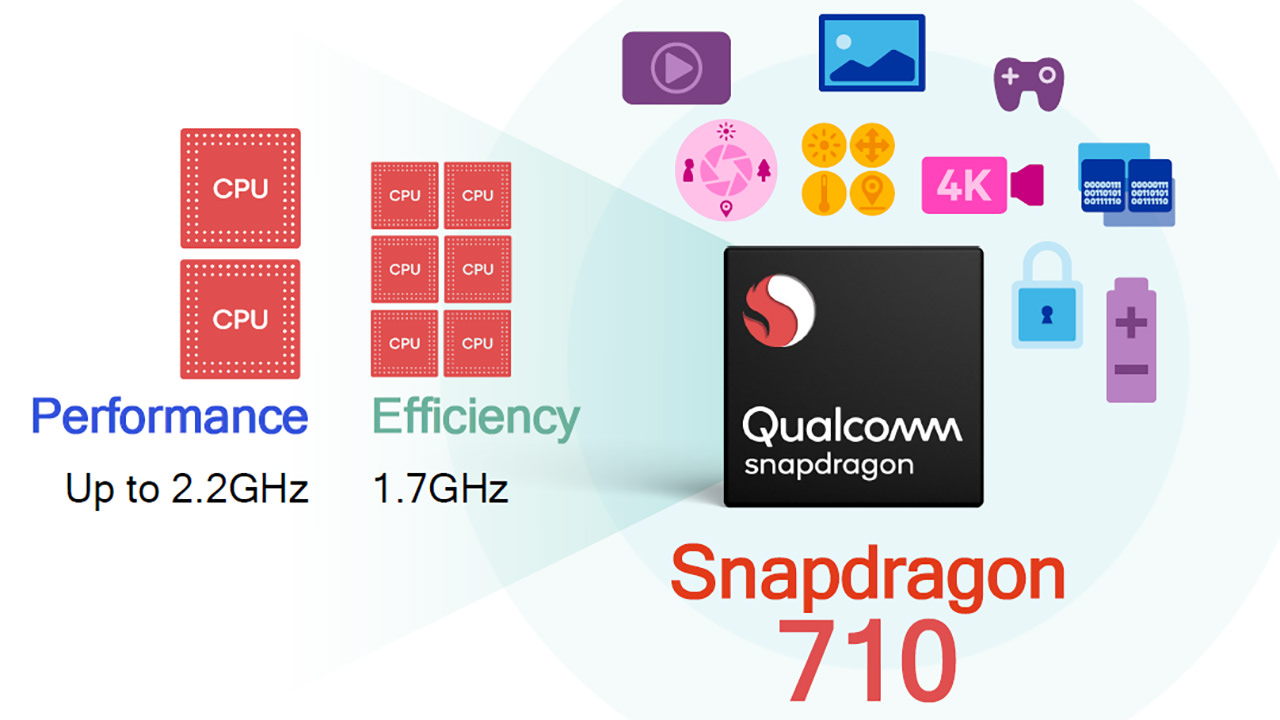Qualcomm Snapdragon 710: Advanced features in the mid-range
Just like the Snapdragon 650 and 660, the new processor will use large cores and features borrowed from the high end.
Qualcomm announced on Tuesday a new product from the Snapdragon family, or rather a new series within the production of Mobile Platform. Qualcomm Snapdragon 710 is the direct successor to the Snapdragon 660, but uses a new numerical progression to underline the renewed performance in the mid-range.
If we consider the limited success of Snapdragon 650/660 solutions among commercial partners, despite the excellent technical characteristics, the reasons why Qualcomm has chosen a new brand are clear.
With a name more similar to the family of top of the range, Snapdragon 710 offers some of the characteristics of the latter in the mid-range, such as the presence of large cores merged with each other in the same package.
 Snapdragon 650 and 660 were among the first mid-range processors to implement large cores, where Snapdragon 625 and 635 only used cores for energy savings. Just to emphasize the presence of more advanced CPU Qualcomm has justified the birth of a new family.
Snapdragon 650 and 660 were among the first mid-range processors to implement large cores, where Snapdragon 625 and 635 only used cores for energy savings. Just to emphasize the presence of more advanced CPU Qualcomm has justified the birth of a new family.
Snapdragon 710 uses eight Kryo 360 processors, two of which at 2.2 GHz and the remaining six at 1.7 GHz. The predecessor, the SD660, uses in comparison Kryo 260 core 2.2 and 1.8 GHz. The GPU Adreno 512 of the last model is replaced with Adreno 616, and there are new DSP and ISP with support for 32 MP cameras in single configuration, or 20 MP in double configuration. The system used for cache memory is taken over by Snapdragon 845, although the amount of memory should be less (but the number has not been made official).
CPU side Qualcomm has anticipated an advantage of about 20-25% in terms of performance compared to the SD660, while for the GPU, the advantage should be 35%. The modem integrated on the new model, X15, supports the 4G LTE Cat. 15 in download, with a maximum speed of 800 Mbps, and Cat. 7 in upload. Do not miss the support for Wi-Fi ac with 2×2 adapter, and we could see several advantages in terms of autonomy thanks to the use of a more advanced production process, Samsung at 10-nm, compared to the predecessor that is 14-nm.
The new processor is available from these days for OEMs, and will arrive on the first commercial devices by the end of the second quarter of 2018. In short, the mid-range will soon be closer to what is proposed by the more expensive devices in terms of technology.

